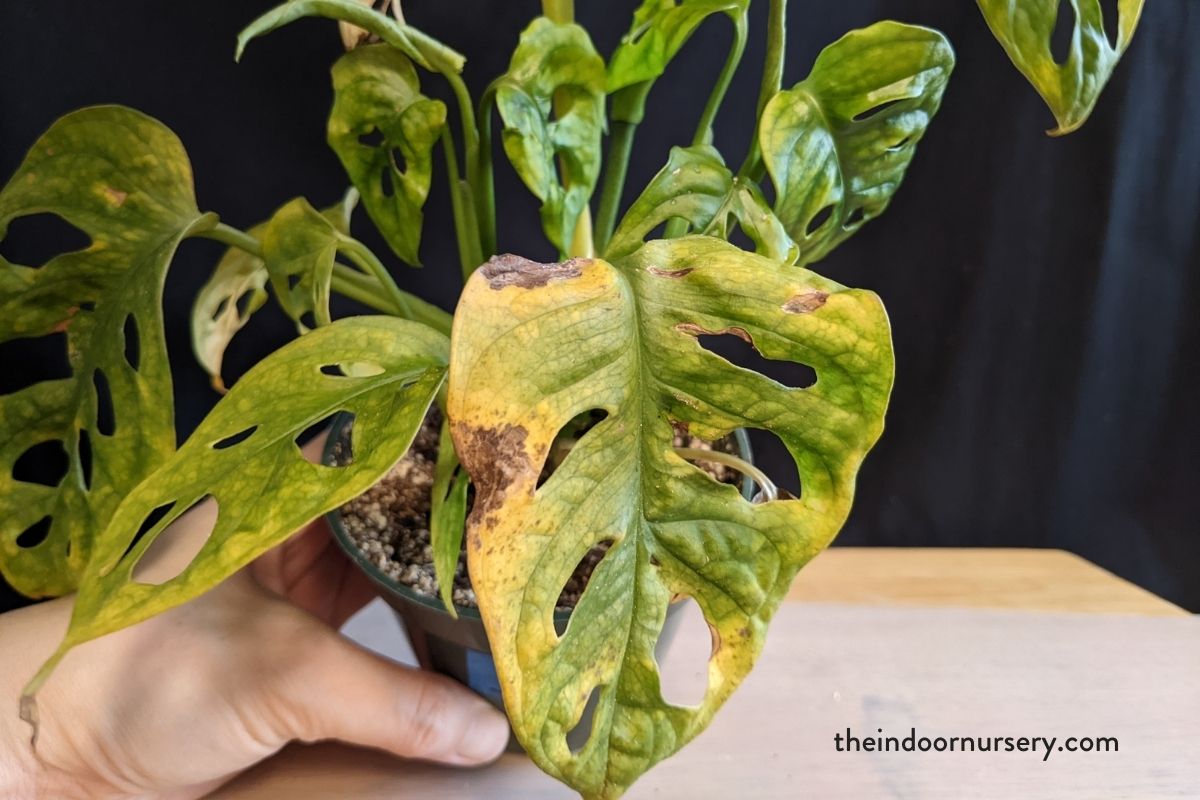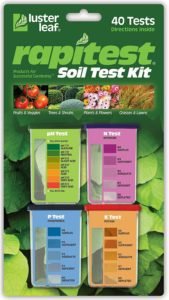Almost anything can be poisonous in high quantities, and the dreaded FB is one of them. Yes, plant friends, we’re talking Fertilizer Burn!
After pouring love, attention and cash money into your plants, it’s a big downer to watch them shrivel and die from a misstep with too much fertilizer.
Using a good fertilizer is one of the secrets to happy plants, but when you notice yellow streaks and withered leaves? That’s a red flag signaling fertilizer burn 🚩
So how do you prevent fertilizer burn? And how can you spot it before it’s too late?
Let’s get into it!
What is fertilizer burn?
Fertilizer burn describes the damage plants sustain when they are unable to process fertilizer, either because it’s been applied in excess or applied improperly. It occurs most often when you’re a bit too heavy handed with your fertilizer, but you may also notice fertilizer burn after you apply plant food to wet foliage on some plants.
A plant’s health and its environmental conditions affect the way it processes nutrients, and these factors contribute to how a plant recovers from one-too-many fertilizer feedings.
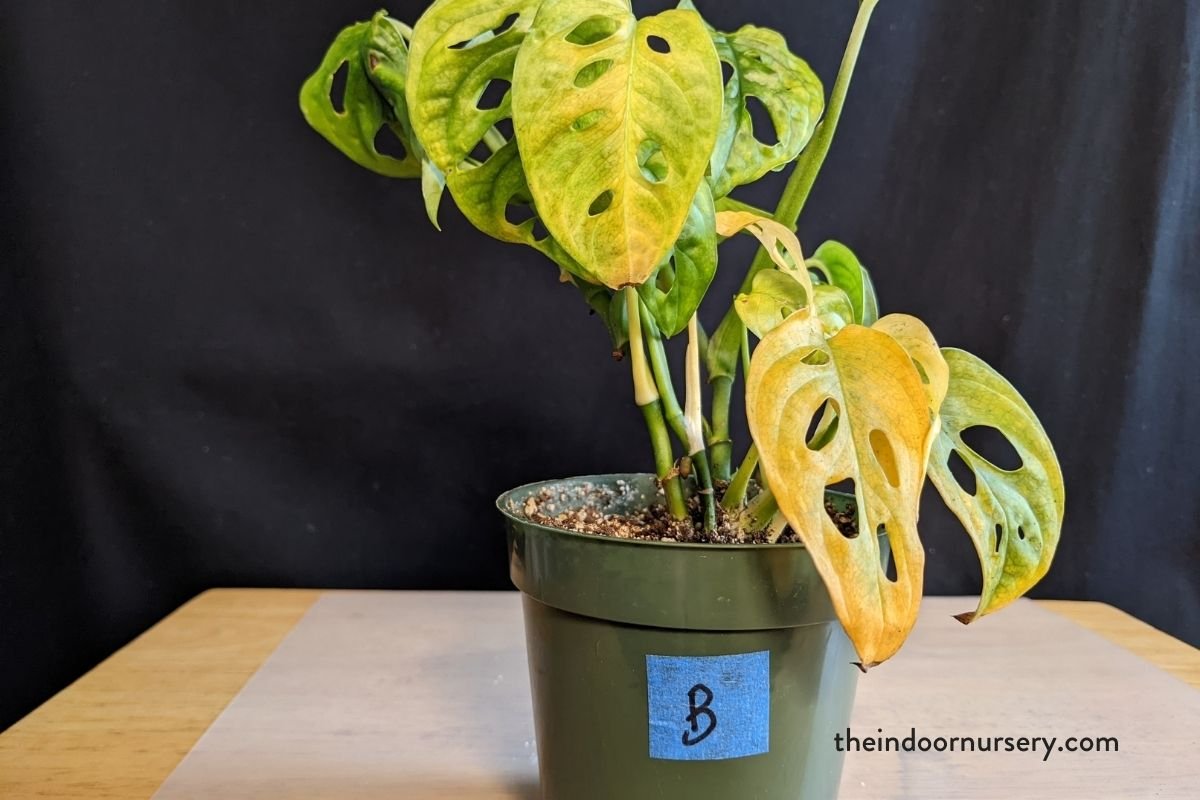
When plants can’t process fertilizer quickly enough, salts in the fertilizer extract moisture from plants’ roots through osmosis. At this point, the fertilizer will dehydrate the plant and “burn” it. This is essentially the same that happens to plants during a drought.
If you’ve overfed houseplants, the first sign of fertilizer burn is typically yellow or brown leaves. In domestic gardens, you’ll notice bleached striping on leaves, occasionally with burnt-looking leaf edges and tips.
What does fertilizer burn look like?
The first sign of fertilizer burn is often the appearance of white salt crust around the roots of the plant or on the surface of its soil. This is a sign that salt is accumulating and may be affecting your plant’s ability to stay hydrated.
Following the appearance of a salt crust, your plant might show these signs of fertilizer burn:
- Yellow or Brown Leaves: Leaves turn yellow in plants when they are not able to get the water they need. This is especially true for fertilizer burn; when the roots lose water to the salt in the fertilizer, the leaves of the plant (especially the lower leaves) will turn yellow or brown. When this happens, it is important to quickly remove the plant and its roots from the soil and wash to remove excess salt.
- Stunted Root Growth: This is known as “root burn” and happens when the roots become damaged due to the toxic soil environment. At this point, they can no longer send water and nutrients to the rest of the plant. When this happens, stop fertilizing the plant immediately and move the plant to a cooler area. Try to flush the soil with water and get rid of the excess salts that are causing root burn.
- Burned-Looking Leaf Tips and Edges: This is another sign of too little water being absorbed by the roots and transported to the leaves. This is often accompanied by yellow or brown leaf discoloration and can be treated in similar ways.
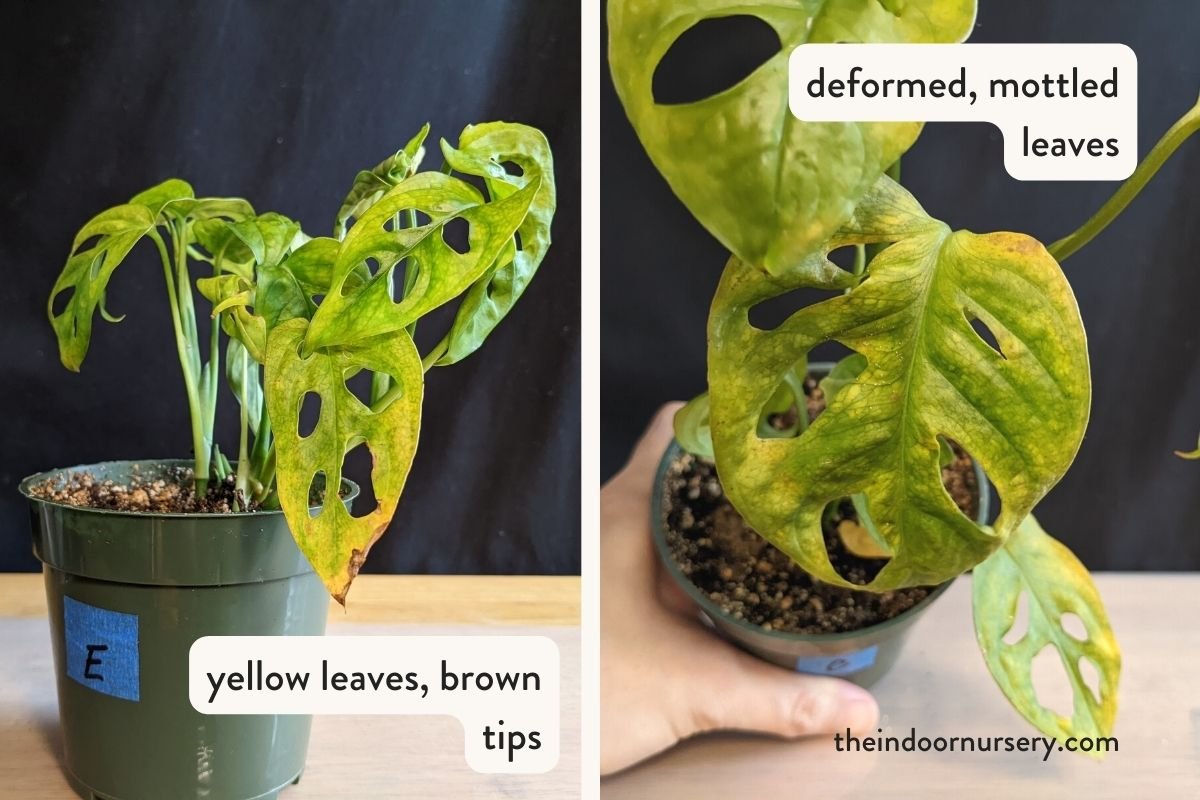
What is the purpose of fertilizer?
So why do we need fertilizer for indoor plants anyway? Many plants grow in less than ideal environments with soil that lacks the necessary nutrients for optimal plant growth.
This is true of houseplants growing in depleted, supermarket potting soil you bought year before last, but it’s also the case in natural environments where many plants compete for limited available nutrients or farming practices drain essential elements from soil over time. In all of these environments, fertilizer gives plants the nutrients they need where nature falls short.
Generally speaking, fertilizer is a natural or artificial substance with chemical elements that support effective, efficient plant growth. Outdoors, soil fertility is an important factor for whether a plant will grow well.
The soil needs to have the right acidity and balance of nutrients for plants to be able to thrive. When the fertility of the soil is low, fertilizer is often the most effective way to quickly improve the environment for plant growth.
Want to know which fertilizer works best? Read our plant fertilizer experiment to find out.
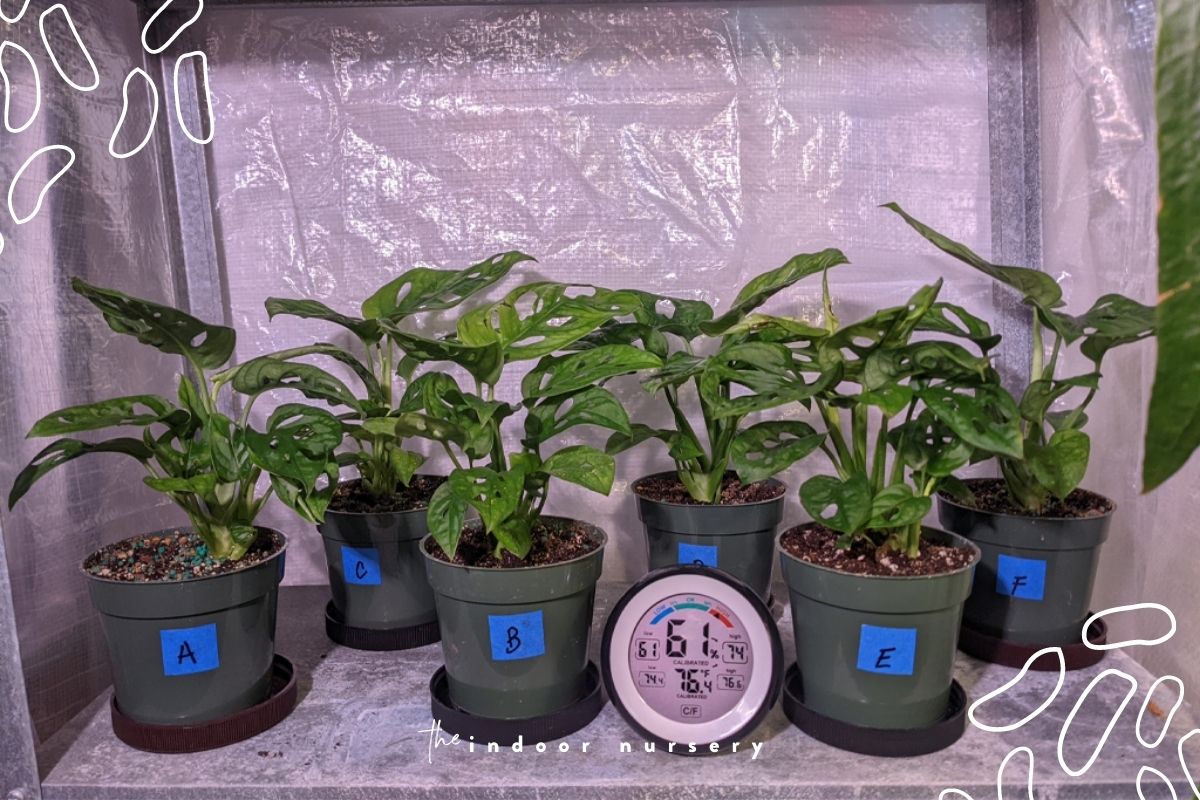
Basic fertilizer requirements
Here’s a little fertilizer 101 for anyone who needs a refresher (cough and nudge to the person with a shriveled houseplant on their hands!). Understanding the nutrient needs of plants is critical to understanding and using fertilizer properly.
Plants absorb hydrogen and oxygen from water and carbon from air, but every other nutrient must come from the soil. These include:
- Nitrogen
- Phosphorus
- Potassium
- Sulfur
- Calcium
- Magnesium
While all of these are important, nitrogen, phosphorus, and potassium are the three most important nutrients in fertilizers. Fertilizers containing different ratios of these nutrients (known as NPK ratios) are available and prescribed for specific uses, depending on your plant and the environment they’re chilling in.
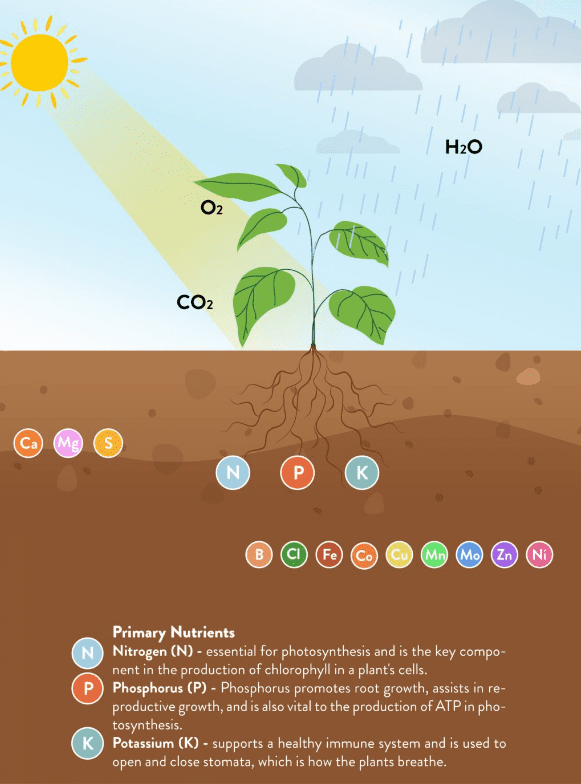
Nitrogen is considered to be the most important nutrient for plants, and plants absorb this nutrient in higher volumes than any other. Nitrogen helps plants form proteins, which make up the tissues of the plant.
Phosphorus, on the other hand, helps plants to use and store energy during photosynthesis, and it plays a role in root activation as well.
The last of these three is potassium, which helps plants to fight disease and improves the quality of plant growth.
With so many quality fertilizers to choose from, the first step in understanding which one is best for your plant is figuring out what deficiencies are present in your soil. You can do this through observation, but if you want to be super accurate? Use a soil test kit. When your soil is depleted, you’ll notice these signs:
- Older looking leaves (nitrogen deficiency)
- Burnt leaf-tips (phosphorus deficiency)
- Stunted plants or yellowing between leaf veins (potassium deficiency)
If you notice your plants are otherwise just a bit meh and not growing well, the cause may be another type of nutrient deficiency within the soil (possibly calcium). If you’re sure the problem isn’t in the soil, check up on your watering routine and make sure your plant is getting the right amount of sunlight.
How does too much fertilizer affect plants?
When you use too much fertilizer, plants are unable to process the fertilizer. Instead of diffusing into plant roots in soil, the salt contained in most commercial fertilizers will sit in the soil and draw water from the roots through molecular attraction.
When this happens, the plant loses vital hydration and a means to transport available nutrients from roots to leaves, resulting in stunted growth and possibly damage to foliage. First come the yellow or brown leaves, then stunted growth, and if you don’t do anything – your plant may wither and die.
Causes of fertilizer burn
There are a few things that cause fertilizer burn. All of them involve, in some way, increased salt content in the soil that ends up dehydrating your plant.
Here are a few of the most common causes of fertilizer burn:
- Using fertilizer with a high salt index
- Using too much fertilizer with a balanced salt index
- Using fertilizer without adequately watering your plant
- Using fertilizer with too much nitrogen
- Using fertilizer that produces excess ammonia
You can group these causes into three different categories:
- Low Osmotic Pressure. Fertilizer can burn plant roots when the osmotic pressure in the root system is too low. This means that instead of being absorbed through the plant’s roots, water is pulled from them. Low osmotic pressure can be caused by cold temperatures and the balance of salts and nutrients in your soil, among other things.
- Fertilizing a Dehydrated Plant. Fertilizer burn can also happen when you’ve fertilized a plant that hasn’t seen water in a while. When this happens, the salt in the fertilizer will absorb the little water in the soil and leave none for the plant to absorb.
- Too Much Nitrogen. Excess nitrogen also plays an important role in fertilizer burn. If you use fertilizer with a high nitrogen content in excess, the nutrient will actually prohibit plant function and prevent the plant from growing.
Preventing fertilizer burn
The good news here is that it’s relatively easy to prevent fertilizer burn, especially if you understand what can go wrong before doing serious damage to your plant. If it happens anyway, there are a few things you can do to save your plant before it’s too late.
To give your plants the best shot at avoiding pesky fertilizer burns, follow these steps:
- Follow fertilizer and supplement labels carefully and look for any salt crust in the soil. When it comes to fertilizer, less is more! It may even be beneficial to start with smaller quantities and work your way to the recommended amount.
- Don’t fertilize plants that are dry or stressed. If plants are already struggling, they will be unable to process fertilizer normally and are more likely to have fertilizer burn.
- Use a fertilizer meant for the types of plants you are growing in the conditions you’re growing them in. Usually, an all-purpose fertilizer that has a nitrogen, phosphorus, and potassium ratio of 10-10-10 will be suitable for most areas. However, areas already high in nitrogen may require fertilizer with a lower nitrogen concentration.
- Use slow-release fertilizer to give plants more time to absorb the nutrients without high volumes of salt accumulating. These typically come in powder or capsule form, are easy to use, and prevent the sudden drama that occasionally comes with using liquid fertilizers..
How to fix fertilizer burn: can plants recover?
So, it happened anyway. What do you do? Well, first of all, don’t panic. Fertilizer burn happens and it doesn’t necessarily do irreparable harm. For potted plants, there are three simple steps to saving plants from fertilizer burn:
How to fix fertilizer burn
- Lift your plant and its roots out of the soil
- Rinse the roots thoroughly to remove excess salt and nutrients
- Repot your plant in fresh soil and resume a normal watering routine
If you’ve over-fertilized a garden bed, you’ll want to treat the affected plants as soon as you notice signs of fertilizer burn. This is how to save a garden bed suffering from fertilizer burn:
How to fix fertilizer burn in a garden bed
- Scoop as much of the fertilizer and affected soil as possible from the affected area
- Drench the soil with as much water as the area will hold to flush the excess salt out of there
- Apply around an inch of water to the affected area daily for at least a week (just the affected area, not the whole garden)
In both scenarios, check the roots of your plants after about a week of regular watering. If you see moist and healthy roots, continue the watering routine for another week. If not, the fertilizer burn may have been too extreme, and it may be time to toss your plants and start again.
The bottom line
At the end of the day, fertilizer burn is pretty common in the gardening world. It can happen from over-fertilizing, and it can also happen as the result of uncontrollable factors like the weather.
By knowing the key ways to prevent fertilizer burn and its most common warning signs, you can greatly reduce the likelihood of harming your plants when you’re actually trying to nourish them. Every mistake is a learning experience that will eventually help you grow the garden of your dreams.
More about fertilizing
- 10 Best Worm Composter Bins For Easy Homemade Compost
- Compost Starter 101: When You Need It And How To Make It
- Our top pothos fertilizer picks for luscious vines
- 5 reasons to use coffee as fertilizer for your plants
- Best fertilizer for Monstera plants for gorgeous leaves
- Fertilizer Burn on Plants? Here’s How to Fix it
- Fiddle leaf fig fertilizer: How to feed your fiddle leaf

